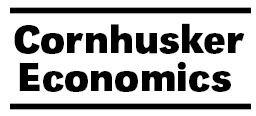Agricultural Economics, Department of

Cornhusker Economics
The History of Emission Trading Programs and the Future of Agricultural Sequestration Carbon Offsets
Date of this Version
6-21-2023
Document Type
Newsletter Issue
Citation
Cornhusker Economics, June 21, 2023
Abstract
Agricultural carbon credits based on sequestering (i.e. storing) additional soil carbon are a relatively recent phenomenon in the effort to address global warming. Businesses have purchased ag sequestration carbon credits to help meet their greenhouse gas (GHG) reduction pledges. Ag sequestration carbon credits are difficult and expensive to accurately measure and usually represent only temporary GHG reductions, not permanent ones. A major USDA study is underway to examine the advantages and disadvantages of ag sequestration carbon credits and their use in achieving voluntary business GHG reduction plans. This paper takes a quick look at (1) the development of the acid rain emission trading program as an air pollution control strategy, (2) the UN Clean Development Mechanism as the model for evaluating projects (like ag sequestration projects) for reducing GHG emissions, and (3) three US programs all focusing to some extent on the appropriateness of current ag sequestration carbon credits as a tool for helping the US and the world achieve net carbon neutrality to avoid the worst impacts of global warming. With luck, the end result will be a restructured approach to ag sequestration carbon credits that will allow them to participate fully in an emerging global carbon offset market and make them a useful tool in achieving US and global carbon neutrality.


Comments
Copyright © 2023 University of Nebraska-Lincoln